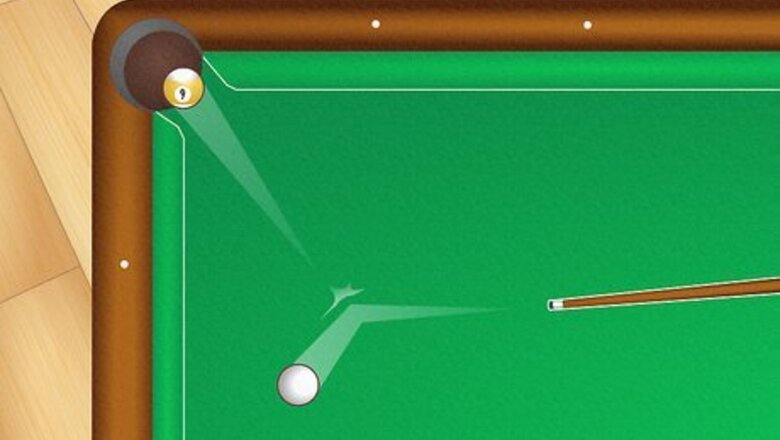
views
- Aim to hit the lowest-numbered ball first when you’re making a shot. It’s okay to pocket the balls out of order.
- Keep making shots until you get a foul or fail to pocket a ball on your turn.
- Win the game if you hit the 9-ball into a pocket during any legal shot.
Objective
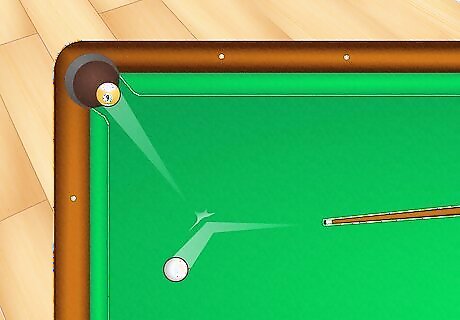
Pocket the 9-ball to win the game. For each shot, players must shoot the cue ball at the lowest-numbered ball still on the table, but they don’t have to be pocketed (or sunk) in numerical order. Players keep taking their turn until they miss or earn a foul. Whoever sinks the 9-ball during a legal shot wins the game! Usually, 9-Ball pool is a 1-on-1 game, but you can split into teams and alternate who shoots the ball if you have more people.
Racking and Breaking the Balls
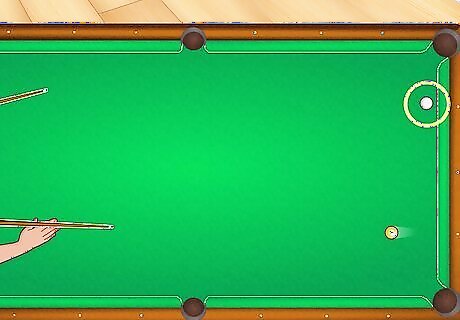
Choose the first player by lagging the ball. “Lagging” is when players compete to hit a ball closest to the head rail at the end of the table. Both players place a ball just behind the head string, which is the line that passes between the second set of diamonds on the side rails and the spot on the table. Players stand behind the head rail and hit the ball at the same time with their cue so it bounces off of the foot rail at the far end of the table. Whoever hits the ball closest to the head rail gets to break the rack to start the game. If your ball goes into a pocket, hits a side rail, or doesn’t reach the foot rail, you lose the lag. If the balls touch each other during the lag, reset them and try again. Flip a coin if you’d rather randomly choose a first player.
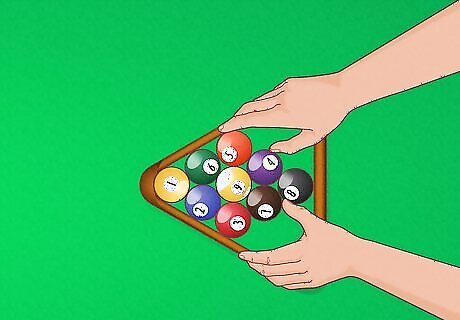
Rack the balls into a diamond shape. Arrange the balls numbered 1–9 inside of a diamond rack so the 9-ball is in the center and the 1-ball is at the top point. The other balls can go in any order. Move the rack so the 1-ball is on top of the table’s foot spot on the end of the table opposite from the head spot. In some variations or tournaments, you may be required to put the 2-ball on the opposite side of the diamond as the 1-ball. If you don’t have a diamond rack, you can still use a standard triangular rack. Just tightly pack the balls into a diamond shape.
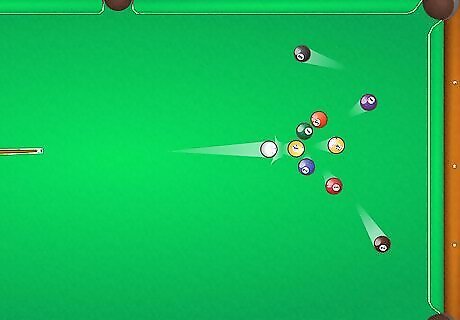
Hit the cue ball to break the rack. The first player can set the white cue ball anywhere behind the head string for their first shot. Using their cue, the player must shoot the cue ball so it hits the 1-ball first during the break. A break is only considered legal if it pockets a ball or causes 4 balls to hit the rails. If that doesn’t happen, re-rack the balls and try again. If the cue ball goes into a pocket, then re-rack the balls and have the other player break instead. If a player pockets the 9-ball on the break, they immediately win the game.
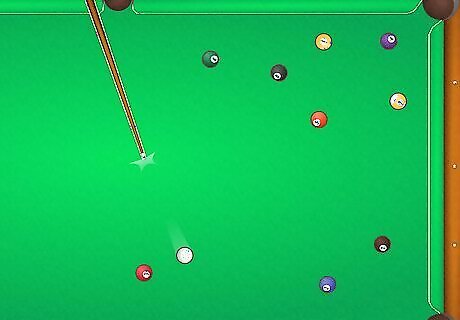
Do a push-out if you want to reposition the cue ball. Right after a legal break, the player can choose to “push-out”, meaning they can shoot the cue ball into a new position without having to hit it into another ball or rail. After the push-out, the other player chooses whether to play from the new position or pass their turn. When the player pockets a ball on the break, they get the choice to push-out. If they did not pocket a ball, the next player gets the option to push-out instead. If a ball gets pocketed during a push-out, it stays out for the rest of the game. The only exception is if the 9-ball is pocketed, it gets “spotted” back onto the foot spot. The push-out rule is optional in friendly games, but it gives the players a little more control over the starting position following the break.
Playing the Game
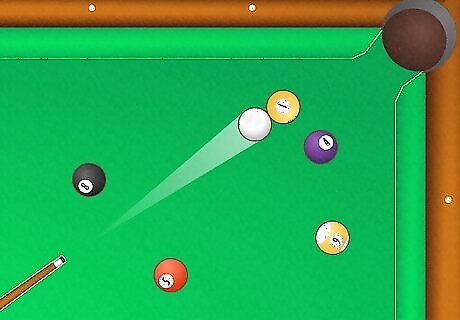
Shoot at the lowest-numbered ball. Every time you take a shot, the cue ball must hit the lowest-numbered ball still on the table before it contacts any other ball. After the shot, at least one ball must hit a rail or go into a pocket for it to be legal. You’re allowed to make a combination shot where you hit the lowest-numbered ball into another ball to pocket it. For example, you may hit the cue ball into the 1-ball so it strikes the 7-ball into a pocket. If the 9-ball gets knocked off the table, place it back on the foot spot, or as close to the foot spot as possible. Any other numbered balls that leave the table illegally stay out of play.
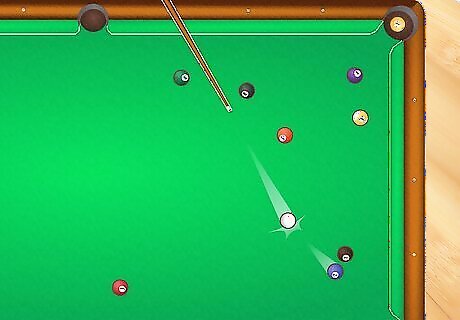
Take another shot if you pocketed a ball. The balls don’t have to be pocketed in numerical order as long as you hit the lowest-numbered ball. As long as you sink at least 1 ball during your turn, you can immediately line up another shot. If you pocketed a higher-numbered ball, you still must hit the lowest-numbered ball on your next shot.
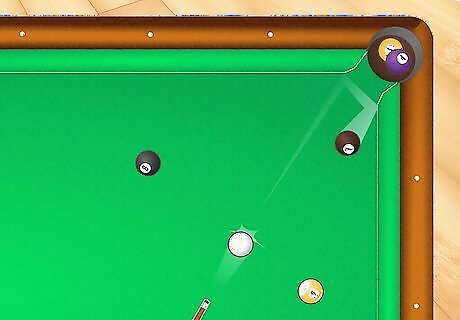
End your turn if you miss or earn a foul. If you aren’t able to pocket a ball, the other player takes their turn playing the cue ball from its current spot. If you make an illegal move and earn a foul, the other player can place the cue ball wherever they want on the table. Common fouls in a game of 9-ball pool include: Hitting the cue ball into a pocket (“scratching”) or off of the table Hitting the wrong ball first Hitting the rail after making contact with a ball Jumping the cue ball over another ball Touching a moving ball Not hitting any balls during your shot In many tournament games, you immediately lose the match if you get 3 fouls in a row. Accidentally touching a non-moving ball is not a foul, but the other players get to decide whether to leave it in the new position or move it back.
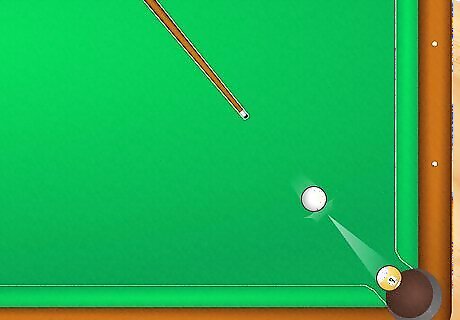
Win the game if you pocket the 9-ball. At any point during the game, if a player pockets the 9-ball and the shot is legal, then they win the game immediately. Because games of 9-ball can end pretty quickly, try playing a best of 3, 5, or 7 for a more competitive match. If the 9-ball is pocketed during a foul, "spot" it back to the foot spot, or as close behind the foot spot as possible.
9-Ball Strategy
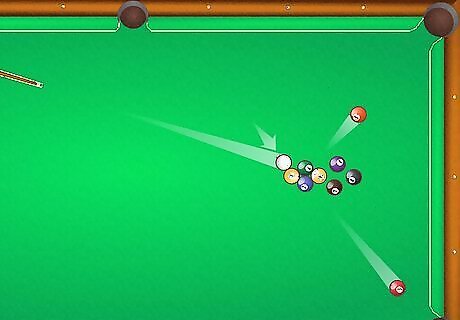
Position the cue ball by a side rail to sink a wing ball on the break. The wing balls are the 2 balls on the side points of the diamond. If you’re breaking, set the cue ball a few inches out from a side rail. Try hitting the closest side of the 1-ball on your shot to send the wing ball toward the corner pocket. If the wing ball went in the pocket, this break usually makes it easy to line up your next shot at the 1-ball.
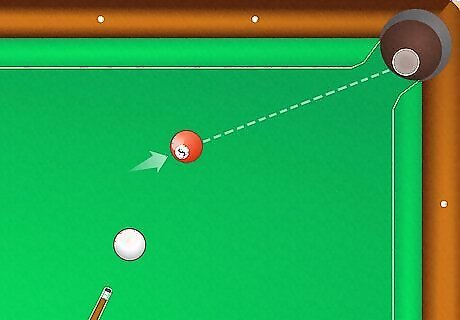
Determine the contact point on the ball for each shot. Before you make your shot, look for the spot on the ball that’s directly opposite from the pocket. Imagine the cue ball lined up behind the target ball so it touches the contact point and aim for that position. This method is sometimes called the “ghost ball” technique, and it helps ensure you get the correct angle for your shot.
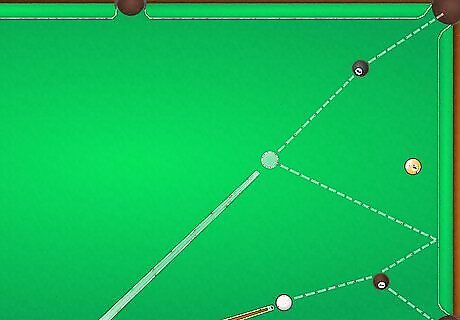
Plan out your next few shots in advance. As you’re planning out your shots, look at the positions for the balls with the next lowest number. Plan out what pockets to shoot toward and will give you the best chance of sinking a ball on your turn.














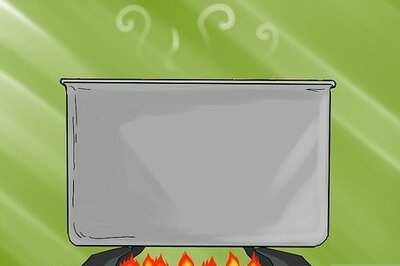





Comments
0 comment